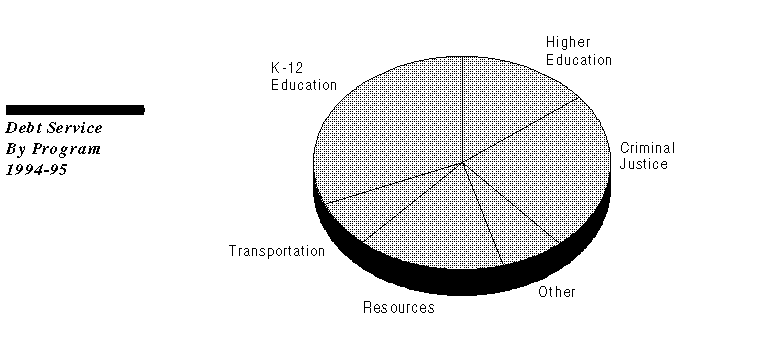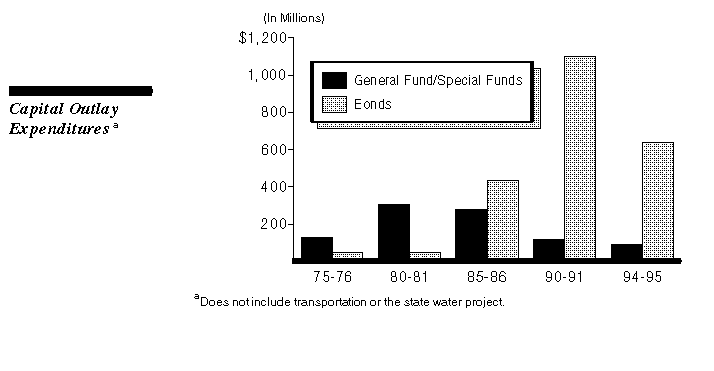
 Legislative Analyst's Office
Legislative Analyst's Office
Bonds have replaced other funds as the main funding source for capital outlay. The figure below compares direct spending from the General Funds and various special funds with spending from bond proceeds. It shows the state's increased reliance on bond funding for capital outlay. In 1975-76, bonds accounted for less than one-third of capital outlay expenditures. In 1994-95, bonds will account for almost 90 percent of expenditures.

The state uses two types of bonds to finance capital outlay--general obligation bonds and lease-payment bonds (also referred to as lease-revenue bonds or Public Works Board bonds). The chart compares expenditures of general obligation and lease-payment bonds over the last seven years.
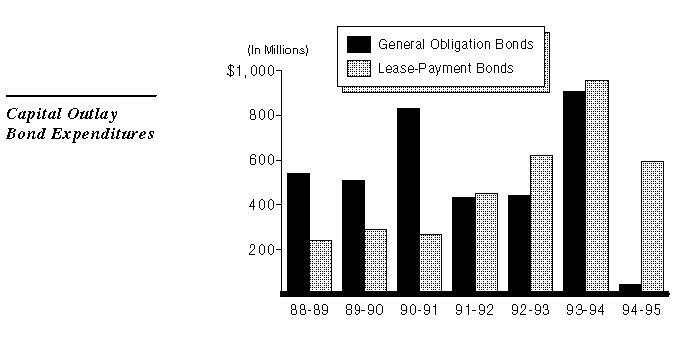
There are many differences between the way general obligation bonds and lease-payment bonds are approved and issued. As the table below shows, lease- payment bonds do not require voter approval and cost more than general obligation bonds.

This figure shows the recent and projected debt service (principal and interest costs) for general obligation and lease-payment bonds. The projections are based on assumed sales of all currently authorized bonds but no additional bond authorizations.
The figure below shows estimated costs to pay principal and interest on currently authorized state bonds as a percentage of projected state General Fund revenues (the state's debt-service ratio).
The figures below show that in the last ten years, debt service has increased from 1.5 percent to 5.2 percent of General Fund expenditures.
The figure shows the distribution of general obligation and lease payment bond debt service payments for 1994-95 by program area.
DEBT SERVICE
Debt Service Has Increased Significantly

Bond Costs Use More of General Fund
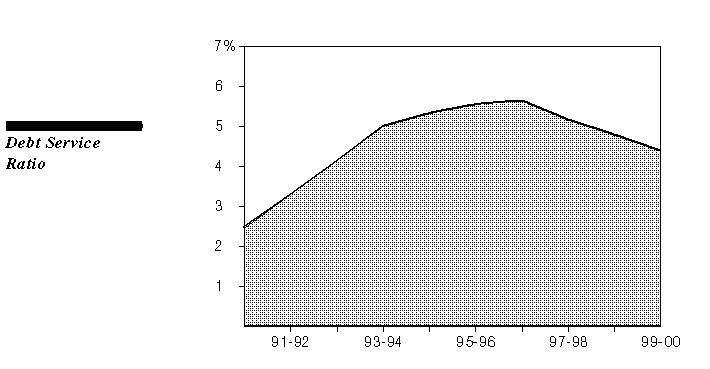
Debt Service Share of General Fund Spending Has Increased
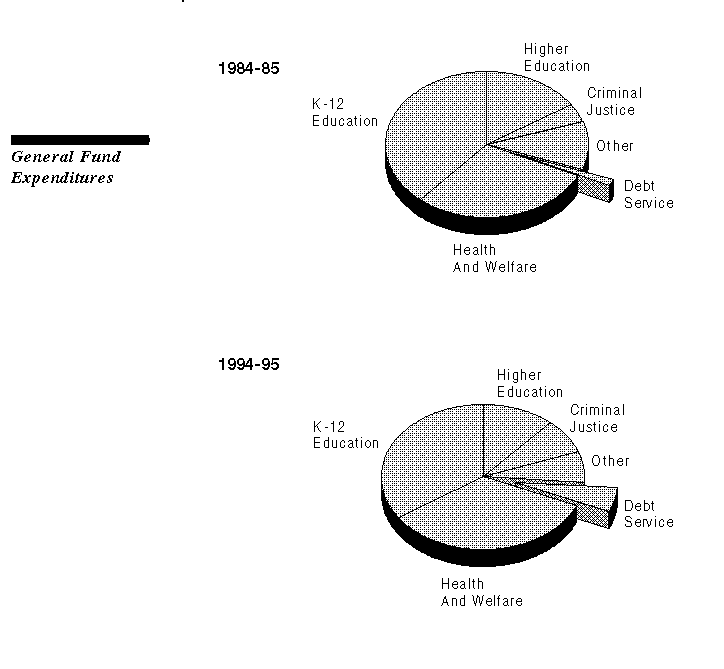
70 Percent of Debt Service Is for Education and Criminal Justice
